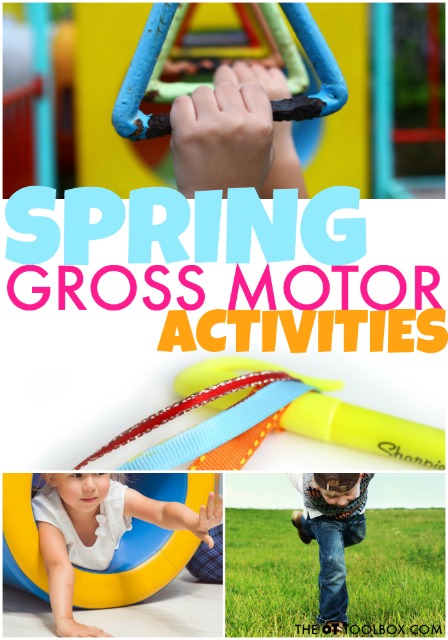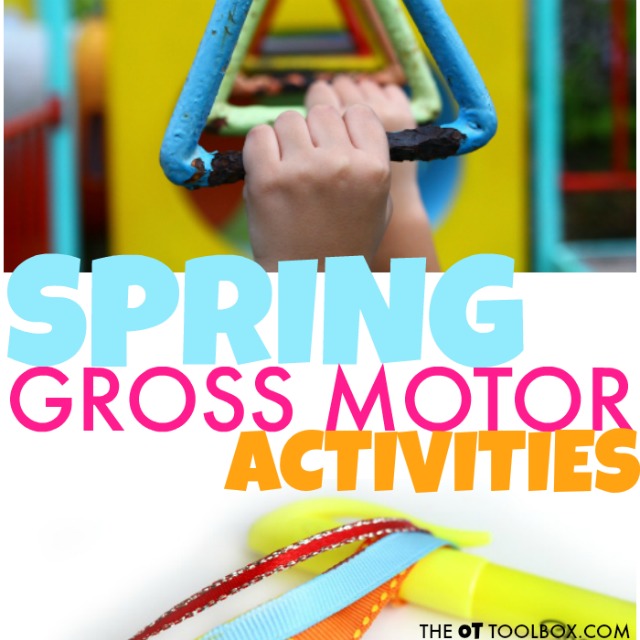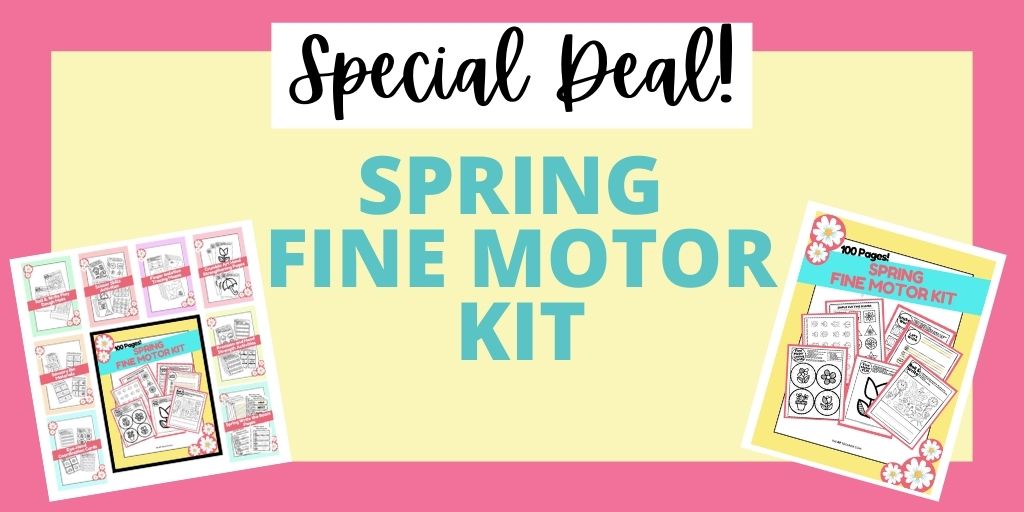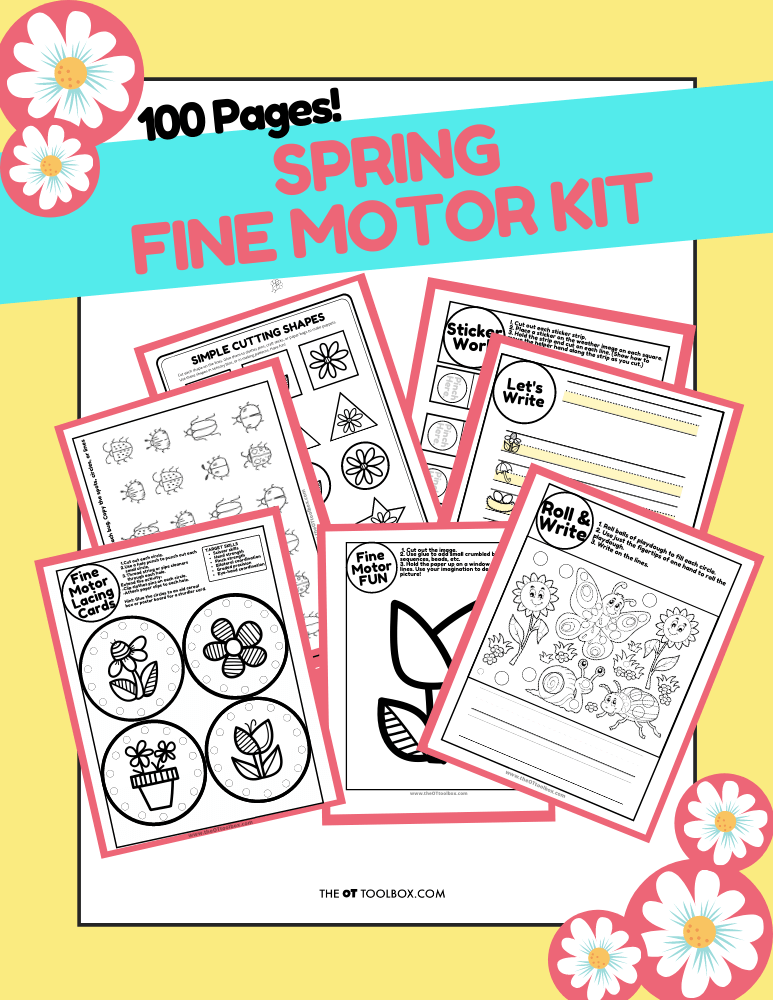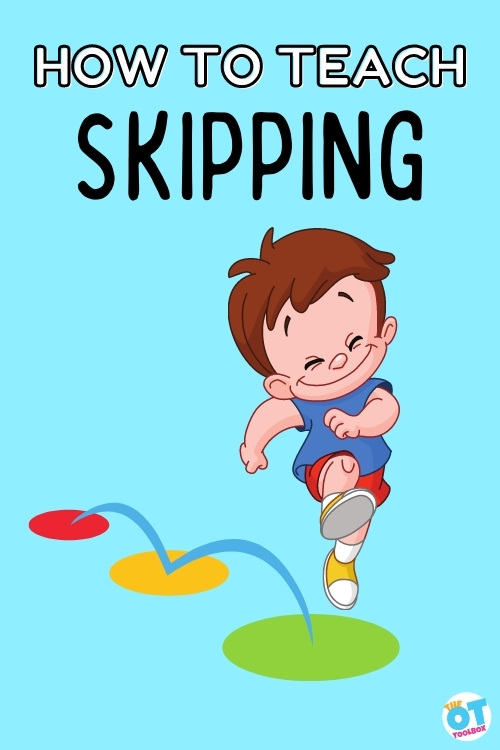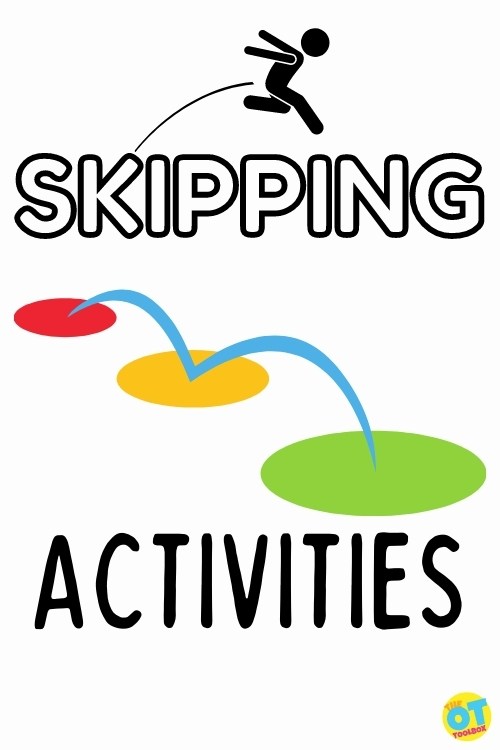Occupational therapy practitioners often times use obstacle courses in therapy sessions to target specific skills through the child’s primary occupation: play. It is through an occupational therapy obstacle course that one can work on sensory input, balance, coordination skills, heavy work input, visual motor skills, bilateral coordination, visual motor skills, direction following, and so much more. Let’s break down OT obstacle courses for functional performance.
Obstacle courses, and the components of gross motor obstacles are a great tool to have in your “therapy bag” of tricks!
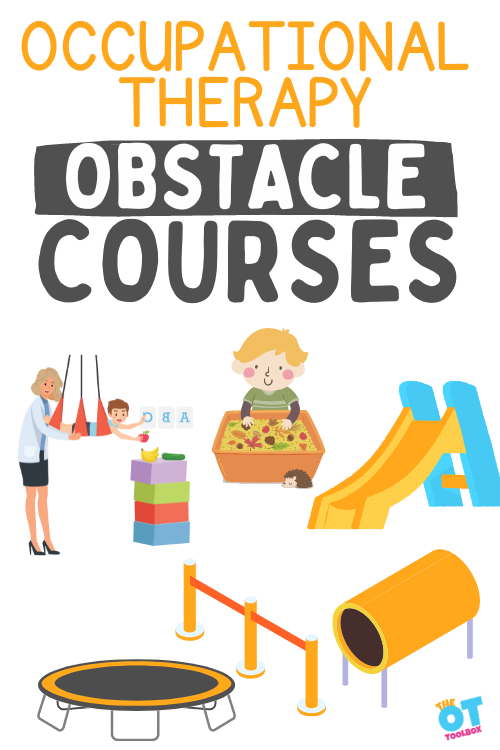
Occupational therapy obstacle courses
Life is full of obstacles. Navigating life’s obstacles builds strength, character, resilience, and focus. Occupational therapy obstacle courses can do the same!
There are so many ways to target occupational therapy goals using an obstacle course. For example, you can use the various types of crawling to incorporate different heavy work input, targeting strength, stability, and motor planning skills. these are great ways to support lower extremity strength and core strength!
Obstacle courses are naturally a sensory obstacle course, through the actions and activities involved, however specific themes and underlying targets can be incorporated as well.
Occupational therapists and occupational therapy assistants use obstacle courses, to address a variety of needs.
In this blog post you will discover the benefits of obstacle courses, how they help development using obstacle course, and ideas to build amazing obstacle course activities.
Benefits of obstacle courses
What are the benefits of occupational therapy obstacle courses?
At first glance, obstacle courses build muscle strength, coordination, and motor planning. This is just the tip of the iceberg. While occupational therapy obstacle courses are great for building strength and coordination, they do so much more.
- Executive function – following directions, attention, focus, sequencing, planning, initiation, and task completion
- Social function (if working with peers) – working together in a group, problem solving, turn taking, waiting, sharing, and negotiation
- Behavioral skills – compliance, behavior, and work tolerance
- Sequencing – remembering all of the tasks in the correct order
- Motor planning – Target motor planning by working through new obstacles and movement patterns builds new skills and motor pathways
- Kinesthetic learning – learning by doing, rather than talking about an action
- Strength – core strength, shoulder and wrist stability, head control, balance, and hand strength are built through obstacle courses. These skills lead to improved sitting balance and fine motor skills
- Bilateral coordination – Bilateral coordination refers to coordinating both sides of the body to do the same action such as holding onto a rope, or alternating actions such as climbing a ladder
- Proprioception – information comes into the body through the muscles and joints. This information helps with arousal level, coordination, and attention
- Sensory information – tactile, visual, olfactory, vestibular, and auditory receptors are activated during obstacle courses
How do occupational therapy obstacle courses help development?
All of the skills above are core skills needed for further development. Fine motor skills are built from core strength. Attention and focus are built and regulated from sensory input. Following directions builds working memory. Executive function and social skills are necessary for academic and professional development.
How to develop an obstacle course in occupational therapy
One thing that comes up often is that one will see an OT clinic full of fun toys and think, “OK, in occupational therapy, we play.” This is true! However there is purpose behind each skilled selection of the toys and therapy equipment, and this is particularly true in an OT obstacle course.
ere are the important steps in setting up an OT obstacle course:
- Determine the goals to be addressed. What is the priority for your learner?
- Build your course around the goals, with emphasis on the highest priority goal
- Add motivators – learners work harder given motivation
- Create a beginning and ending point – everyone needs to know how far they need to go
- Check out Pinterest for obstacle course ideas
- Select your obstacle course ideas
- As always, Amazon (affiliate link) is full of resources for items to incorporate in your obstacle course
Obstacle Course Ideas
Depending on the goals in which are being targeted, you can select from many different obstacle course equipment and activities:
- Balance beams
- Sensory swings
- Sensory bins
- Sensory writing trays
- Play with weighted toys
- Play with specific targeted toys
- Floor ladder
- Ball pit activities
- Walk on uneven surfaces
- Sit on unstable surfaces
- Crawling through tunnels
- Using ride-on equipment
- Complete pushups or sit ups
- Crawling under objects
- Hopping into hoops
- Hopscotch
- Hula Hoop activities
- Outdoor balance beam ideas
- Indoor balance beam ideas
- Animal walks
- Jumping jacks
- Crossing midline activities
- Push or pull heavy items
- Throw bean bags or balls
- Carry heavy items
- Throwing or catching tasks
- Deep breathing stations
- Relay race tasks
- Stand or hop on one foot
- Fine motor tasks such as manipulating objects, handwriting activities
- Functional tasks like dressing or tool use
- Cross Crawl exercises
By using any combination of the occupational therapy goal areas above, you can create a “course of action” to move through a therapy session while accomplishing goals. Combine these target areas with a client’s interest such as super heroes, animals, sports, events, or therapy themes, and you’ve got a client-centered therapy activity that is not only meaningful but also motivating
Examples of occupational therapy obstacle courses
Build your course around your prioritized goal(s) to target specific areas:
- Following directions – set up several obstacles in succession with different variables to follow and remember. Over, under, times 10, backward, clap your hands, touch your toes.
- Executive function – have your learner develop and organize the obstacle course for themself or another partner. They can write it down, draw pictures, or use verbal skills to describe the course
- Self regulation – incorporate heavy work into the course. This could include wearing ankle weights, pushing a ten pound ball, wearing a heavy backpack, and several repetitions of the course
- Frustration tolerance – make the course very challenging. Add several elements that will challenge your learner, then change the sequence to continue to add more of a challenge
- Social function – have one learner teach another, pair two learners of different levels to work on waiting, taking turns, and tolerance. Two similar peers can build competition, or dealing with emotions
- Coordination – vary the difficulty of the course to build different levels of coordination. Time your learner to measure improvement in coordination without falling
- Visual motor skills – each time your learner finishes a round of the obstacle course, they have to write a letter, draw a picture, cut out a design, or put pieces into a puzzle
sensory obstacle courses
Obstacle courses naturally offer sensory input. By moving through and around obstacles, a child can participate in organizing and regulating sensory processing tasks in a very real and functional manner. It’s through play that this happens.
Sensory obstacle courses are in fact, every obstacle course! In a typical obstacle activity, sensory input includes:
- Proprioceptive input– Heavy work input occurs through movement activities but also by using obstacle course equipment such as ladders, ball pits, tumble pits, foam equipment, crawling, animal walks, etc. Each activity offers different motor planning opportunities and different types of body awareness input.
- Vestibular input– crawling, scooting, sliding, jumping, rolling, tumbling, climbing, etc.
- Visual input– Visual processing skills are part of navigating in, through, around, under, over obstacles on a course.
- Tactile input– Moving through a course offers tactile input through movement and manipulation of objects and equipment.
- Auditory– While not always a necessary aspect of sensory obstacle courses, auditory processing can be targeted in obstacle course objectives.
You’ll notice that the first three areas listed are the “big three” sensory systems that calm and regulate the body and play a major role in sensory processing. Because of this, an obstacle course is a great therapy tool and often used in sensory interventions. Sensory obstacle courses can be used as part of a sensory diet.
The Tactile Sensory System is one of the earliest developed senses of the body. The skin is the largest and the most prevalent organ. The skin performs unique duties for the body. Most importantly, the skin protects and alerts us to danger and discriminates sensation with regard to location and identification.
These two levels of sensation work together yet are distinctively important. Discrimination of touch allows us to sense where a sensation is felt on the body. With discrimination, we are able to discern a fly that lands on our arm.
The second level of the tactile system alerts us to danger. It allows us to jump in response to the “fight or flight” response when we perceive a spider crawling on our arm. The information received from the tactile system also includes light touch, pain, temperature, and pressure.
When either of these levels of sensation are disrupted, tactile dysfunction can result. This presents in many ways, including hypersensitivity to tags in clothing, a dislike of messy play, difficulty with fine motor tasks, a fear of being touched by someone without seeing that touch, a high tolerance of pain, or a need to touch everything and everyone.
When the tactile system is immature or impaired, the brain can become overly stimulated with resulting poor organization and regulation of input. Children can then experience difficulty with behavior and concentration as a result.
Treatment for the child with an impaired tactile sensory system focuses on providing a variety of deep- and light-touch experiences (Koomar & Bundy, 1991). Additionally, resistance activities, much like those indicated for decreased discrimination of vestibular and proprioceptive information, may be used in the therapeutic sensory diet.
The Proprioception Sensory System is the recognition and response to the body’s position in space with an internal feedback system using the position in space of the joints, tendons, and muscles. This sensory system allows the body to automatically react to changes in force and pressure given body movements and object manipulation. The body receives more feedback from active muscles rather than passive muscle use. Related to the proprioception system is praxis or motor planning. Individuals are able to plan and execute motor tasks given feedback from the proprioceptive system. Praxis allows us to utilize sensory input from the senses and to coordinate hat information to move appropriately.
Treatment for the child with an impaired proprioceptive sensory system focuses on providing intense proprioceptive information and improving postural responses.
The Vestibular Sensory System is the sense of movement and balance, and uses the receptors in the inner ear and allows the body to orient to position in space. The vestibular system is closely related to eye movements and coordination.
Vestibular sensory input is a powerful tool in helping children with sensory needs. Adding a few vestibular activities to the day allows for long-lasting effects. Every individual requires vestibular sensory input in natural development. In fact, as infants we are exposed to vestibular input that promotes a natural and healthy development and integration of all systems.
The sensory vestibular activities listed in this book are playful ways to promote performance and tolerance to movement activities. They are also challenges against gravity to help kids with difficulties in equilibrium, balance, self-regulation, and adjusting to typical sensory input.
The vestibular system operates through receptors in the inner ear and in conjunction with position in space, input from the eyes, and feedback from muscle and joint receptors, is able to contribute to posture and appropriate response of the visual system to maintain a field of vision.
This allows an individual to detect movement and changes in the position of the head and body. Dysfunction in the vestibular system may result in hypersensitivity to movements or hyposensitivity to movements.
Attention and focus are built and regulated from sensory input.
Printable sensory stations in obstacle courses
Sensory paths and sensory stations can support the areas listed above by simply printing off materials to use in a simple or complex sensory obstacle course.
- Spring Sensory Stations – hang these sensory stations to build a great obstacle course
- Winter Sensory Stations – use these during cold winter indoor days
- Fall Sensory Stations – these will be great for back to school occupational therapy obstacle course
- Summer Sensory Stations – grab these now for summer time fun!
An obstacle course can be anything. It can start as simple as furniture, couch cushions, and a puzzle, or become as elaborate as American Ninja Warrior. First, determine your “why”, then come up with the “what and how”.

Victoria Wood, OTR/L is a contributor to The OT Toolbox and has been providing Occupational Therapy treatment in pediatrics for more than 25 years. She has practiced in hospital settings (inpatient, outpatient, NICU, PICU), school systems, and outpatient clinics in several states. She has treated hundreds of children with various sensory processing dysfunction in the areas of behavior, gross/fine motor skills, social skills and self-care. Ms. Wood has also been a featured speaker at seminars, webinars, and school staff development training. She is the author of Seeing your Home and Community with Sensory Eyes.


